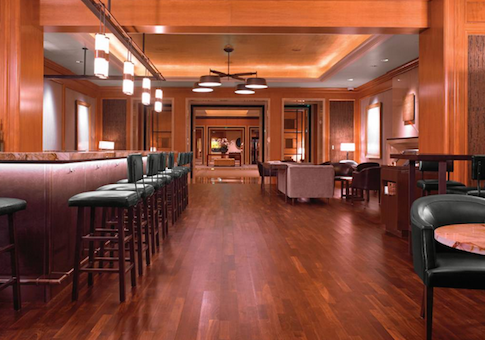The secretive Democracy Alliance donor club steers far more money to left-wing political groups than recent press reports have indicated, documents obtained by the Washington Free Beacon reveal.
Press reports on the Alliance and its meeting this week accounted for just half of its spending totals, the documents indicate.
Those reports focused on the Alliance’s core network of groups. But its fundraising apparatus steers money to a much larger array of liberal and Democratic organizations.
The Alliance does not actually handle the money that gets distributed to its portfolio of organizations. Instead, it serves as a pass-through, recommending groups for support by its cadre of wealthy left-wing donors.
The groups it supports fall into two categories: a core network of organizations that this year grew to nearly three dozen, and a larger "progressive infrastructure map" (PIM) of at least 180 liberal nonprofits, political vendors, activist groups, and Super PACs.
Alliance partners, who must donate at least $200,000 to DA-backed groups each year, gave about $30 million to groups in its core network last year, according to briefing documents handed out at this week’s conference.
As the number of groups in that core network grows, so too will the funds they receive, the Alliance hopes. It asked partners to step up their giving to those groups this year: Its goal is to secure $50 million in Alliance partner support.
However, that only accounts for about half of total DA partner donations, according to the briefing document.
"Our best current data shows that Partners currently divide their giving about 50-50 between the PIM and the core recommended groups," the document states.
Contributions to progressive infrastructure map groups count toward a DA partner’s annual giving requirements, making those groups a part of the DA network, even though they do not undergo the same strategic vetting as the organizations in the Alliance’s core network.
The PIM "has grown in recent years, through partner nomination … to 180 or more groups," the Alliance document says. Unlike its core network, the PIM "does not go through other aspects of the usual DA vetting process," it notes.
However, PIM groups have received personal attention from DA leadership. In April of last year, Alliance president Gara LaMarche told attendees of its conference in Chicago that he had met with leaders of 50 PIM organizations.
The inclusion of PIM groups, DA explained to this week’s conference attendees, "provides the space for numerous important progressive interests, like gun violence and fighting ‘religious freedom’ laws that foster discrimination."
The Alliance began counting PIM donations towards partners’ contribution thresholds in 2012, according to documentation obtained at a prior DA conference.
In 2012, those partners donated $35.1 million to groups in the core Alliance network and more than $55 million to PIM organizations, a slide in LaMarche’s 2014 presentation revealed.
The following year, core network groups got $28.8 million, while PIM groups received $40.5 million.
The Alliance’s expanded network of core organizations have combined annual budgets of more than $300 million, according to additional documents obtained at the San Francisco meeting.
The larger PIM network spends even more. Including those groups, Alliance-backed groups were responsible for roughly one of every three dollars spent by Super PACs during the 2014 election cycle.
Confusion about the role of the progressive infrastructure map in DA’s fundraising operation has led to inaccurate reports regarding the scale of that operation.
The PIM, wrote the Huffington Post last year, is "simply a list of organizations that do progressive work, though they are not part of the elite list of groups the DA is working to direct funding toward. That list includes only 20 groups."
Ryan Grim, one of that piece’s authors, admitted that that characterization was inaccurate, though the story remains uncorrected.
